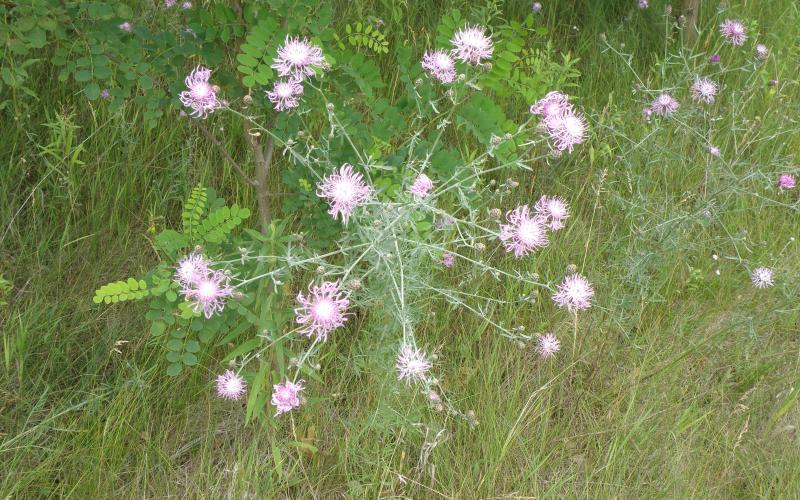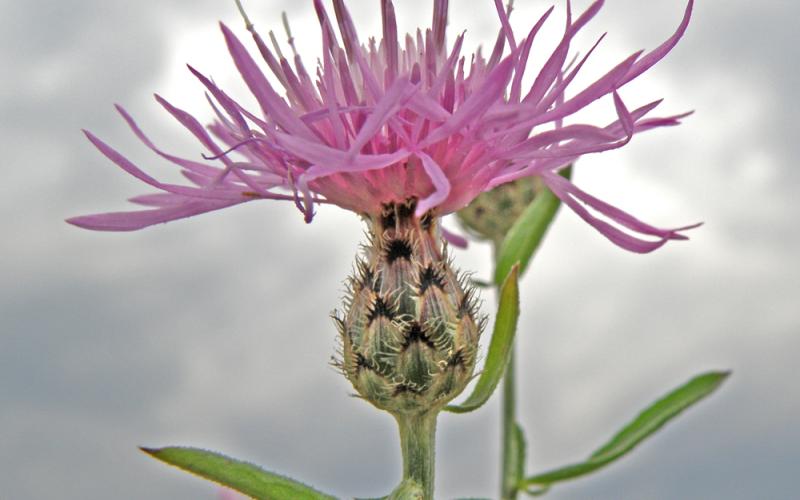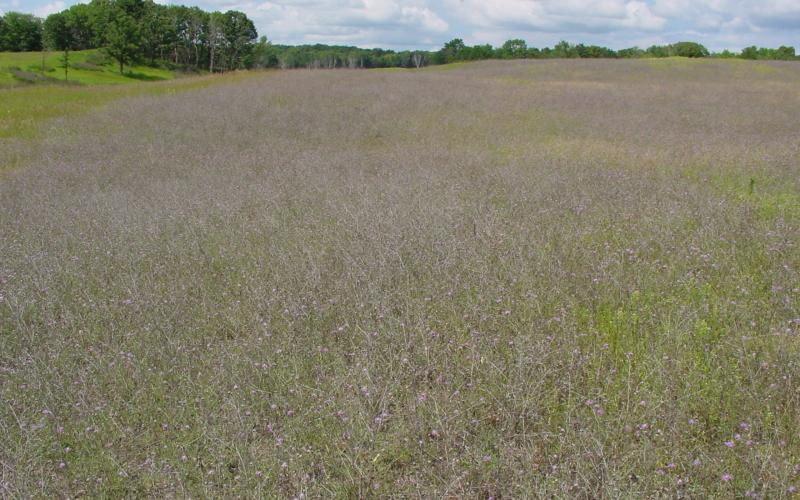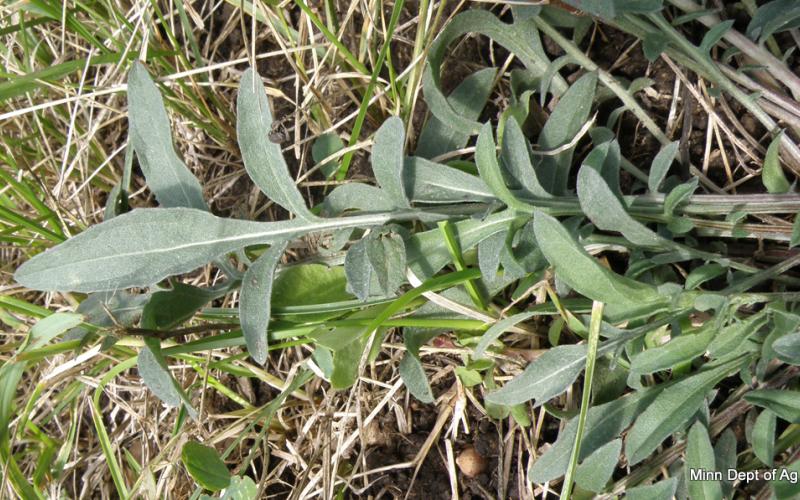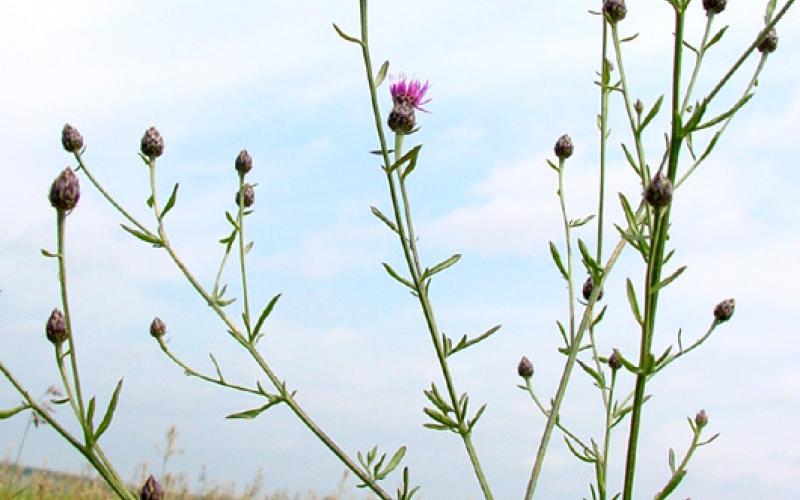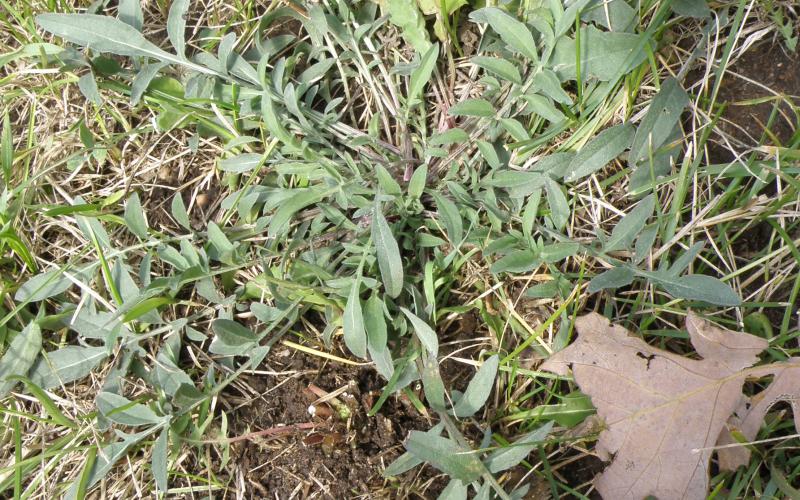Common Name: Spotted Knapweed
Scientific Name: Centaurea stoebe L. ssp. micranthos (Gugler) Hayek or Centaurea maculosa
Legal Status
Efforts must be made to prevent seed maturation and dispersal of plants into new areas. Additionally, no transportation, propagation, or sale of these plants is allowed. Failure to comply may result in enforcement action by the county or local municipality.
Background
Spotted knapweed is a native of Europe and Asia. It was introduced to North America in the 1890s as a contaminant in agricultural seed and through soil discarded from ship ballast. It has become a serious problem of pastures and rangeland in the western United States.
Description
- Grows 2- 4 feet tall and has a long tap root.
- Foliage is gray-green.
- Flowers are small, oval, pink to purple, produced at the end of branched stems and covered with stiff bracts marked with dark, upside-down “V” markings, giving them a spotted appearance. Blooming occurs from June through August.
- In the first year, the plant is a low-lying rosette with deeply lobed leaves and a thick taproot. In the second year, the plant bolts, producing stout, branching stems with alternate leaves having few to no lobes, and becoming progressively smaller up the stem.
Habitat
Spotted knapweed prefers dry, sandy soils. It is found growing in a wide range of natural and disturbed habitats. Typically invading natural areas, pastures, forest and field margins, mining areas, and unmaintained gravel pits, it is also commonly found along roads, railways, and trails.
Means of spread and distribution
It is currently found throughout most of the northern half of the state and is spreading south. It is now a common weed of roadsides and pastures in Minnesota.
Impact
Spotted knapweed is highly invasive and, therefore, can severely decrease the biological diversity of native and agronomic habitats by reducing the availability of desirable forage for livestock operations, degrading wildlife habitats, and hindering reforestation and landscape restoration efforts. It also produces a chemical that is toxic to other plants, allowing it to spread quickly and become established.
Prevention and management
- A sound management plan will take a commitment of several years to achieve satisfactory results, especially on older stands that have an established seed bank. Controlling small stands is crucial to prevent larger problems from occurring, as large, established stands can be difficult to control.
- Persistent hand-pulling and digging may be practical on small patches. Hand-pulling alone can be effective in sandier soils. Dig out and remove as much of the long tap root as possible. Regular site check-ups will be required to ensure that re-sprouting and new seedlings are destroyed. Wear long sleeves and gloves when handling this plant, it can be a skin irritant to some people.
- Mowing before flowering can reduce seed production. However, because the plants continue to bloom throughout the summer/early fall, repeated mowing throughout the season is required to keep the plants from re-sprouting and producing seeds. Wash equipment thoroughly following mowing to prevent spread of seeds to new areas.
- Various herbicides have been used successfully. If you plan to use herbicide treatments, check with your local University of Minnesota extension agent, co-op, or landscape care expert for assistance and recommendations. There are several businesses throughout the state with state-certified herbicide applicators that can be hired to perform chemical applications for noxious weed species. Herbicide applications during early spring and late fall that target rosettes result in good overall management. Follow-up treatments may be necessary to kill new seedlings or plants unaffected by the initial application.
- Biological control is an option for reducing large infestations; there are natural enemies that feed specifically on this plant. This can be an effective tool in combination with other methods of control. The Minnesota Department of Agriculture (MDA), in cooperation with the Minnesota Association of County Agricultural Inspectors, oversees a statewide biological control program for this noxious weed that is free of charge to landowners. To learn more about biological control, contact the MDA or your county agricultural inspector.
- Spotted knapweed lifecycle and treatment timing graphic
